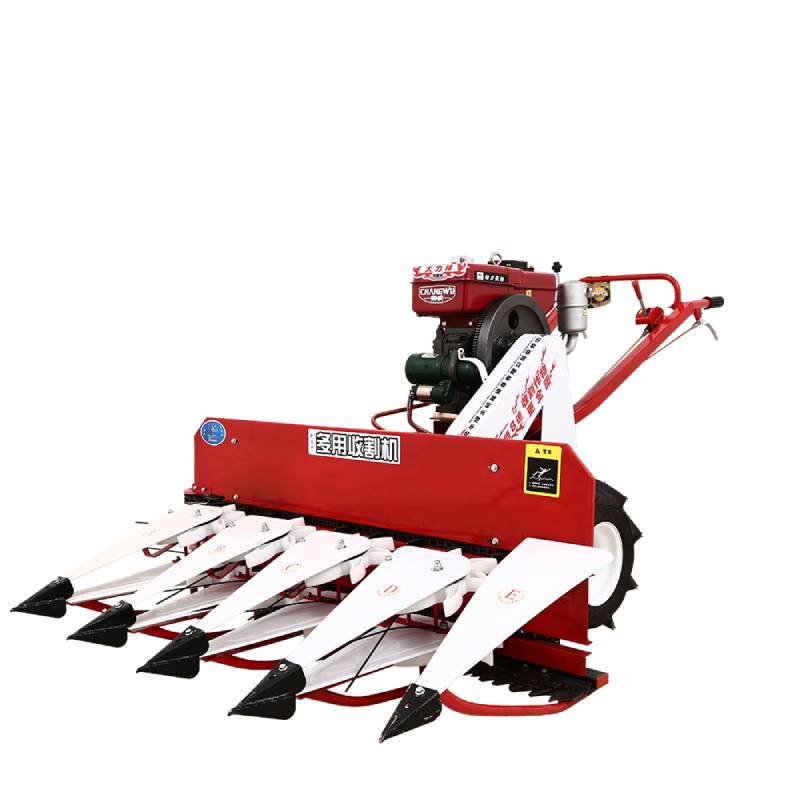Reaper Binder: Want Faster, Cleaner Cutting & Binding?
Field Notes: A Real-World Look at the Hercules reaper and today’s reaper binder market
If you’re shortlisting a reaper binder for rice or wheat, here’s the straight talk. I spent time in Julu Industrial Park, Xingtai City, Hebei (China’s quiet workbench for ag machinery), and the Hercules line stood out—not just on paper, but in muddy plots where specs meet reality.

Industry trends and where a reaper binder still wins
While mid-size combines grab headlines, smallholder demand for compact reaper binder units is ticking up—especially in terraced fields, flood-prone paddies, and regions with fragmented land. Many buyers want low fuel burn, low grain loss, and minimal soil disturbance. Makes sense. In fact, several dealers told me that “lightweight and repairable” outranks fancy telematics in most conversations.
Hercules GD120C2: specs that matter
Hercules (from Julu, Xingtai, Hebei) builds the GD120C2—marketed simply as the Hercules reaper—aimed at rice/wheat binding. The harvester is compact, surprisingly agile, and designed for tight turns and soft ground.
| Parameter | Typical Value (≈, real-world may vary) |
|---|---|
| Model | GD120C2 |
| Cutting width | ≈ 1.2 m |
| Engine power | ≈ 12–18 kW (diesel) |
| Field capacity | ≈ 0.2–0.5 ha/h |
| Binding | Twine knotter, adjustable bundle size |
| Grain loss (field test) | ≈ 1–2% on standing crop; ≤ 3% on lodged crop |
Process flow, materials, and testing
- Materials: high-tensile alloy steel frame; wear-resistant cutter bar; sealed bearings; reinforced rubber tracks.
- Methods: CNC cutting, robotic welding in critical joints, phosphating + powder coat, torque-marked assembly.
- Testing standards referenced: ISO 4254-1 (ag machinery safety), ISO 12100 (risk assessment), ASTM B117 (coating salt-spray), in-house endurance bench (≈ 200 h).
- Service life: around 5–8 harvest seasons with normal maintenance; blades and belts are consumables.
- Industries/crops: rice, wheat, barley, oats; small plots, terraced hillsides, wet paddies, demo farms.
Where it helps
The reaper binder format shines in lodged rice, narrow paddy dikes, and co-ops that want bound bundles for manual threshing or small stationary threshers. Fuel use is modest; transport is easy on a light truck. Honestly, that alone sells units in mountainous regions.
Vendor comparison (indicative)
| Vendor | Strengths | Notes |
|---|---|---|
| Hercules (Hebei) | Value pricing; rugged frame; simple service | Good for co-ops; parts support improving |
| Yanmar-class | Premium fit/finish; refined powertrain | Higher capex; excellent dealer network |
| Local OEM (various) | Lowest upfront cost | Quality varies; check QA and spare parts |
Customization and options
- Cutting width: ≈ 1.0–1.5 m options.
- Track vs. wheel undercarriage depending on paddy softness.
- Twine quality and bundle diameter setpoints for different straw moisture.
- Guard kits, LED work lights, and crop lifters for lodged fields.
Field feedback and quick case notes
A Hunan co-op reported 0.38 ha/h average pace with the Hercules unit, grain loss near 1.6% on standing rice; operators liked the narrow turning radius. In Bangladesh, a dealer told me—somewhat proudly—that the machine kept running after a long rainy spell; they just swapped belts and kept cutting. Not glamorous, but very real.
Certifications and compliance
Buyers typically look for CE conformity (Machinery Directive 2006/42/EC), ISO 4254-1 safety alignment, and noise/labeling per ISO 11684. Ask vendors for test logs (salt-spray hours, bench endurance) and a pre-delivery checklist. It seems basic, but it filters the good from the merely shiny.
References: [1] ISO 4254-1: Agricultural machinery—Safety—Part 1. [2] ISO 12100: Safety of machinery—General principles. [3] ISO 11684: Tractors and machinery—Safety signs and hazard pictorials. [4] ASTM B117: Standard Practice for Operating Salt Spray (Fog) Apparatus.
- ISO 4254-1:2023, International Organization for Standardization.
- ISO 12100:2010, International Organization for Standardization.
- ISO 11684:1995+Amd, International Organization for Standardization.
- ASTM B117-19, ASTM International.
Latest news
-
Mini Combine Harvester for Paddy – Compact, Efficient Rice Harvesting SolutionsNewsNov.24,2025
-
Mini Chain Harvester: Compact Forestry Solutions for Sustainable LoggingNewsNov.23,2025
-
Kartar Mini Harvester – Compact, Efficient Harvesting Machinery for Small FarmsNewsNov.23,2025
-
Compact Power: Elevate Your Farming with Harvesting Machine SmallNewsNov.22,2025
-
Discover the Power and Potential of Harvester Mini Combine Machines | Efficient Small-Scale HarvestingNewsNov.22,2025
-
Compact Harvester Machines: Small-Scale Agriculture’s Big AdvantageNewsNov.21,2025








